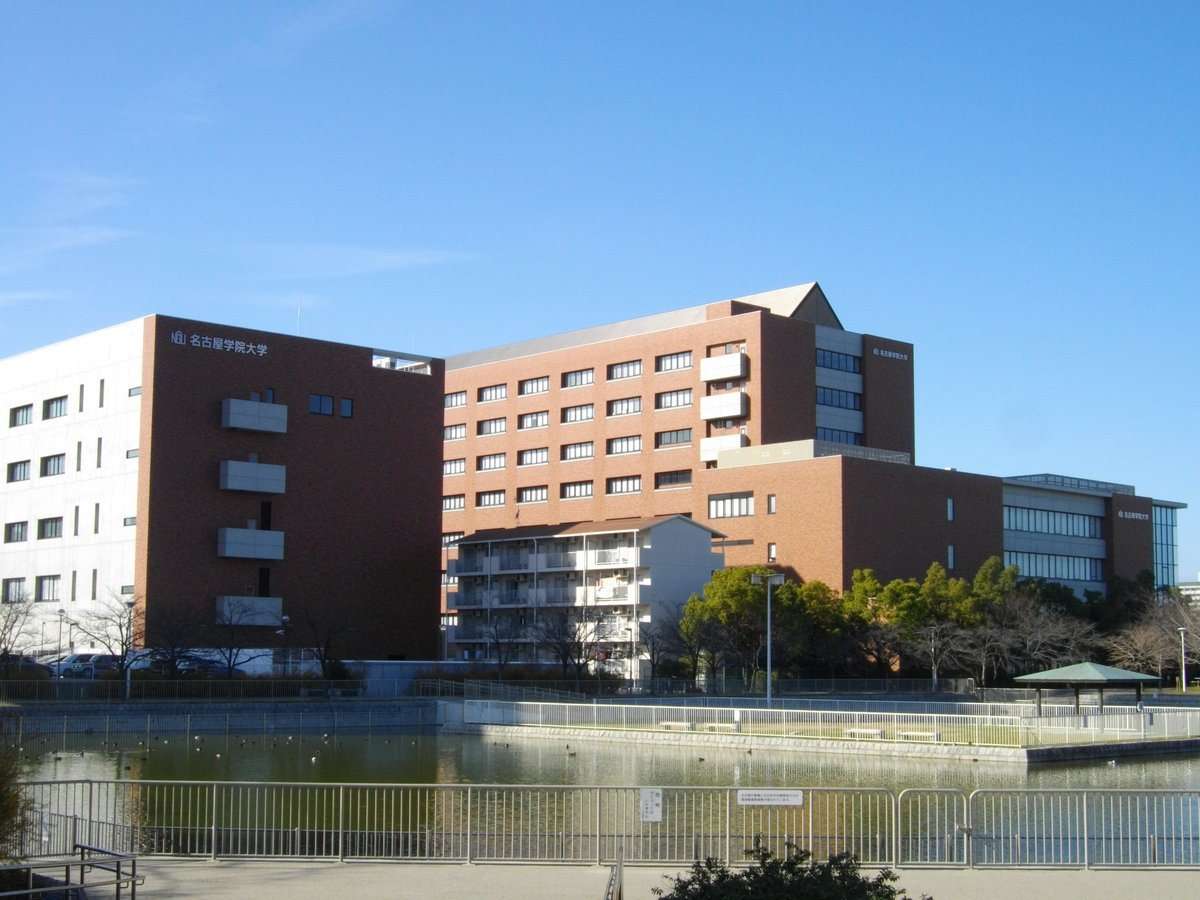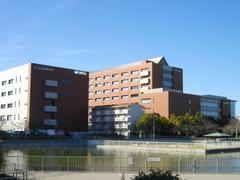
Nagoya Gakuin University Visiting Guide: Hours, Tickets, and Nearby Attractions
Date: 14/06/2025
Introduction
Nestled in the heart of Nagoya, Japan, Nagoya Gakuin University (NGU) stands as a testament to the city’s blend of academic tradition and cultural heritage. With origins dating back to 1887 and the guiding motto “Fear God, Love People,” NGU offers visitors the chance to explore a historic institution that uniquely melds Western and Japanese influences. Situated in Atsuta-ku—a district rich in spiritual and historical significance—NGU’s campus is both a vibrant educational hub and a gateway to some of Nagoya’s most celebrated attractions, including Atsuta Jingu Shrine, Shirotori Garden, and the renowned Nagoya Castle. This comprehensive guide offers essential visitor information, practical travel tips, and recommendations for nearby attractions to help you plan a memorable visit to NGU and its surroundings. For further details, please explore the official NGU website and the Nagoya Tourism Guide.
Table of Contents
- Introduction
- Historical and Cultural Foundations of Nagoya Gakuin University
- Visiting Hours and Admission
- Guided Tours and Special Events
- Accessibility and Facilities
- Nearby Historical and Cultural Attractions
- Travel and Transportation Tips
- Culinary Experiences Near Nagoya Gakuin University
- Photography and Visitor Tips
- Frequently Asked Questions (FAQ)
- Conclusion
- References
Historical and Cultural Foundations of Nagoya Gakuin University
Founded in 1887 by Dr. Frederick C. Klein as the Aichi English School, Nagoya Gakuin University has evolved from a language school into a comprehensive university, offering programs in Business, Economics, Foreign Studies, and Human Health. The institution’s Christian ethos, encapsulated in its motto “Fear God, Love People,” is reflected in its commitment to intercultural understanding and educational excellence. Since relocating to Atsuta-ku in 2007, NGU’s campus has become an integral part of Nagoya’s cultural landscape, neighboring revered sites like Atsuta Jingu Shrine and Shirotori Garden.
Visiting Hours and Admission
- Campus Hours: NGU welcomes visitors on weekdays from 8:30 AM to 6:00 PM. Visitors interested in events or guided tours should confirm schedules in advance via the official website.
- Admission: Access to the campus grounds is free. Certain buildings and events may require prior permission or a ticket.
Guided Tours and Special Events
NGU organizes guided campus tours during open campus days and special cultural events. These tours offer insights into the university’s history, academic life, and distinctive architecture. The annual school festival in autumn is a highlight, featuring multicultural performances, workshops, and a variety of food stalls—open to the public for an immersive experience.
Accessibility and Facilities
- Location: The main campus is located in Atsuta-ku, easily reachable via Hibino subway station (日比野駅), just a short ride from Nagoya Station.
- Facilities: The campus features accessible pathways, ramps, elevators, and restrooms. Key sites include the university chapel, International Seminar House, and landscaped gardens.
- Photography: Permitted in public outdoor areas. Permission is required for photography inside campus buildings.
Nearby Historical and Cultural Attractions
Atsuta Jingu Shrine
- Significance: One of Japan’s oldest and most revered Shinto shrines, housing the legendary Kusanagi no Tsurugi sword.
- Hours: 5:00 AM – 5:00 PM (seasonal variations)
- Admission: Free
- Features: Seasonal festivals, historic ceremonies, and impressive shrine architecture.
Shirotori Garden
- Type: Traditional Japanese garden
- Hours: 9:30 AM – 4:30 PM (closed Mondays)
- Admission: ~300 yen for adults
- Highlights: Seasonal flora, tea ceremonies, and cultural events.
Nagoya Castle
- Location: Approximately 20 minutes by subway from NGU.
- Hours: 9:00 AM – 4:30 PM (last admission 4:00 PM, closed Mondays/new year holidays)
- Admission: 500 yen for adults, various discounts available.
- Features: Rich samurai heritage, reconstructed towers, and museum exhibits. (Nagoya Castle Official Site)
Osu Shopping District & Osu Kannon Temple
- Attractions: Lively shopping streets, eateries, and the historic Osu Kannon Temple.
- Access: Easily reached from NGU by public transport.
Endoji & Shikemichi Historical Districts
- Features: Preserved Edo-period merchant streets, local crafts, and traditional architecture.
Travel and Transportation Tips
- Getting There: Take the Meiko Subway Line to Hibino Station; NGU is a short walk away.
- Public Transport: Nagoya’s subway and bus systems are efficient and foreigner-friendly.
- Parking: Limited on campus; public transport is recommended.
Culinary Experiences Near NGU
Nagoya is famous for “Nagoya Meshi”—regional dishes such as:
- Hitsumabushi: Charcoal-grilled eel over rice.
- Miso Nikomi Udon: Udon noodles in a rich miso broth.
- Tebasaki: Seasoned chicken wings.
Visit Sakae or Fushimi districts for popular restaurants and izakaya, or sample street food in Osu District.
Photography and Visitor Tips
- Best Seasons: Spring (cherry blossoms) and autumn (foliage) offer vivid photo opportunities.
- Footwear: Wear comfortable shoes; campus and nearby sites involve walking.
- Etiquette: Remove shoes when entering certain buildings, respect shrine customs, and observe site-specific rules.
Frequently Asked Questions (FAQ)
Q: Is NGU open to the public?
A: Yes, the campus is open to visitors during regular hours; some buildings may require permission.
Q: Are guided tours available?
A: Yes, guided tours are offered during special events and open campus days. Check the official website or contact the International Office for schedules.
Q: How do I get to NGU?
A: Take the Meiko Subway Line to Hibino Station; the campus is a short walk away.
Q: What are the must-visit sites nearby?
A: Atsuta Jingu Shrine, Shirotori Garden, and Nagoya Castle are top recommendations.
Q: Are there any entry fees?
A: Entry to NGU is free; nearby attractions may charge separate admission.
Q: What events should I look for?
A: The NGU school festival in autumn and seasonal festivals at Atsuta Jingu Shrine are particularly noteworthy.
Conclusion
Nagoya Gakuin University is not only an educational institution but also a cultural hub connecting visitors to Nagoya’s rich history and vibrant city life. Its accessible campus, regular events, and proximity to major historical sites make NGU an ideal starting point for exploring Nagoya. Whether your interests lie in history, architecture, or cultural exchange, NGU and its surroundings offer an enriching experience. For event updates and detailed visitor information, consult the Nagoya Gakuin University official website and consider downloading the Audiala app for real-time guides and notifications.
References
- Visiting Nagoya Gakuin University: A Guide to Exploring its Historic Campus and Surroundings, 2024, Nagoya Gakuin University Visitor Guide (https://www.ngu.jp/en/)
- Visiting Nagoya Gakuin University and Nearby Historical Sites: A Cultural Guide for Tourists, 2024, Nagoya Cultural Tourism Resources (https://www.nagoya-info.jp/en/)
- Nagoya Castle Visitor Guide: History, Tickets, and Travel Tips for Exploring Nagoya’s Iconic Monument, 2024, Nagoya Tourism Board (https://www.nagoyajo.city.nagoya.jp/en/)

























